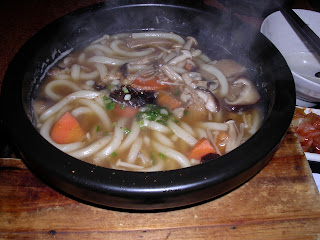Catching up on some of my posts
today. Here are my adventures from Saturday, October 6, 2012.
My intended itinerary was to
walk to a few streets with great architecture recommended to me by someone who
lived in Shanghai for eight years. The Shanghai Museum was on the way to those
streets, so I thought, “why not see how bad the lines are today?” Hardly any
lines at all, despite the same sign about a one-hour wait for entrance that I
saw the previous day. This is not to say that the museum wasn’t crowded, it
was—Chinese, foreigners in tour groups, small children everywhere. The museum
is a popular place.
 |
Sign in front of the Shanghai Museum advising visitors of a
one-hour wait to get through the security check. |
 |
| Jasweck in front of the museum. |
Established in 1952, the
museum houses about one million pieces in its collection in categories such as
artifacts of China’s ethnic minorities, jade and ivory works, ancient Chinese
currencies, ceramics, calligraphy, paintings, and seals. Exhibits throughout
the four floors of the museum give visitors a glimpse into China’s long and
artistic history. Most of the informational signs within each exhibit are
presented in Chinese and English, and pamphlets for each exhibit are available
in Chinese, Japanese, and English. The museum also has audio guides in a wider
variety of languages.
One of my favorite galleries
was the Chinese Minority Nationalities’ Art Gallery. Of China’s 1.3 billion
people, about 92% are ethnic Han, and the remaining 8% consist of 55 other
ethnic groups. The gallery reminded me a bit of the National Museum of the
American Indian in Washington, D.C. (but on a much smaller scale), with
traditional clothing, textiles, crafts, and metal and wood works on display for
the various ethnic groups.
 |
My favorite costume in the exhibit. Men's embroidered outfit from the Yi ethnic group
in the late 20th century. Unfortunately, the sign with the exhibit did not explain the
purpose of the decorated stick protruding from the headdress. |
 |
Polychromatic batik decorative apron (top) and batik quilt facing (bottom).
Miao ethnic group, late 20th century. |
 |
| Folding wooden bookshelf. Uygur ethnic group. |
 |
| Tibetan mask. |
The Ancient Chinese Jade
Gallery was also interesting. Of the over 300 pieces of jade displayed in the
gallery, spanning from the Neolithic Age to the more recent Ming and Qing
dynasties, it was the jade cicada that caught my attention. During the Han
dynasty (206 BCE – 220 CE) Jade carved in the shape of a cicada was placed in
the mouth of the deceased upon burial to express the wish of those still living
that the deceased would revive as a cicada.
 |
Jade cicada.
Photo courtesy of the website of San Francisco's Asian Art Museum. |
By far, I think my favorite
galleries were those for Chinese Calligraphy and Chinese Painting. My mother,
who is currently taking a course on these subjects, would have a better
understanding of the progression of styles than I did and would have recognized
many of the calligraphers and artists. Despite a lack of knowledge in this
area, you can’t help but stand in awe of the beauty of not only the finished
works in the gallery, but of the skill and spirit of the artists that are
expressed in each brush stroke.
Anyway, it was approaching
dinnertime when I left the museum, so I started out in search of a vegetarian
restaurant, with pictures and English on its menu, that I found online. It was
a good 45-minute walk to get there, but when I arrived, I was told that the
restaurant was temporarily closed. Great. I looked at the other restaurants I
had plotted on my city map. They were all too far from the hotel given my state
of semi-exhaustion by that point.
So another 45-minute walk
later, I ended up sharing a table with a Chinese couple at Ajisen Ramen (a
Japanese noodle place) on Nanjing Road, close to my hotel. I had eaten there with colleagues back
in June, and liked the atmosphere, service, food selection, and prices. For
45RMB (about $8), I got a tall, refreshing mango juice and a bowl of noodles
with a variety of mushrooms and vegetables.
 |
| This isn't your grocery store ramen. |
Then a nice walk back to the hotel.
 |
| A glimpse at Nanjing Road. |
 |
| This is a happenin' street in Shanghai. |
















No comments:
Post a Comment